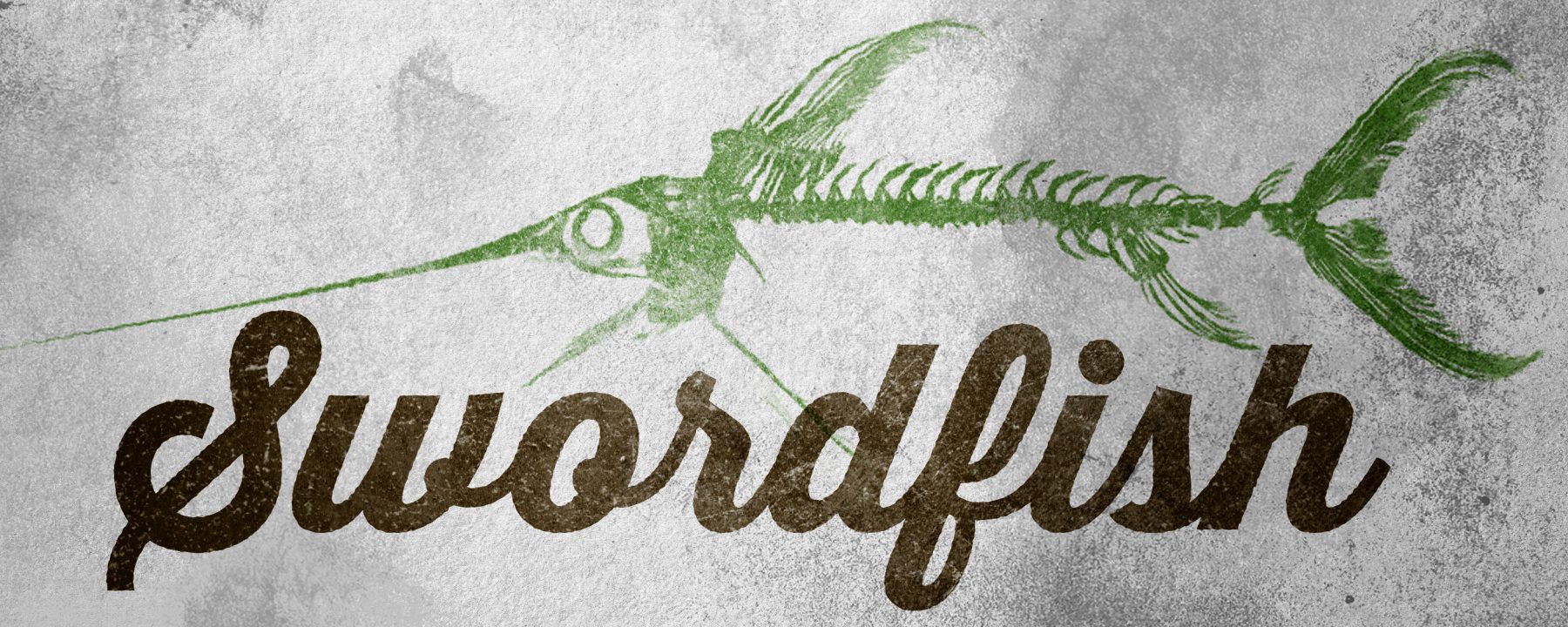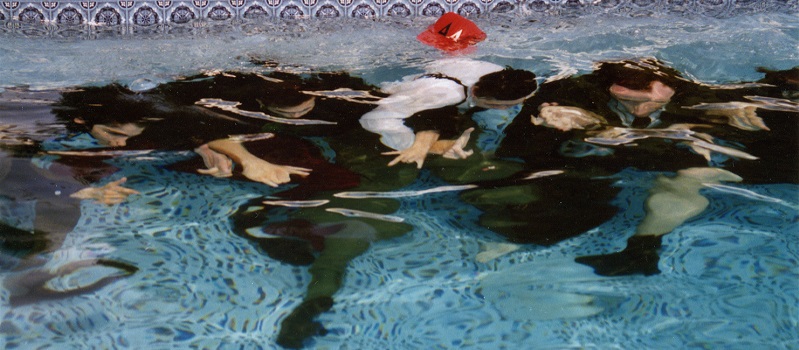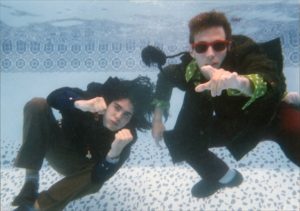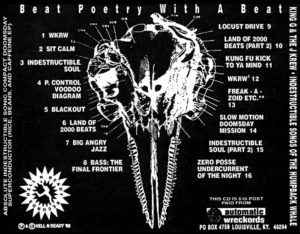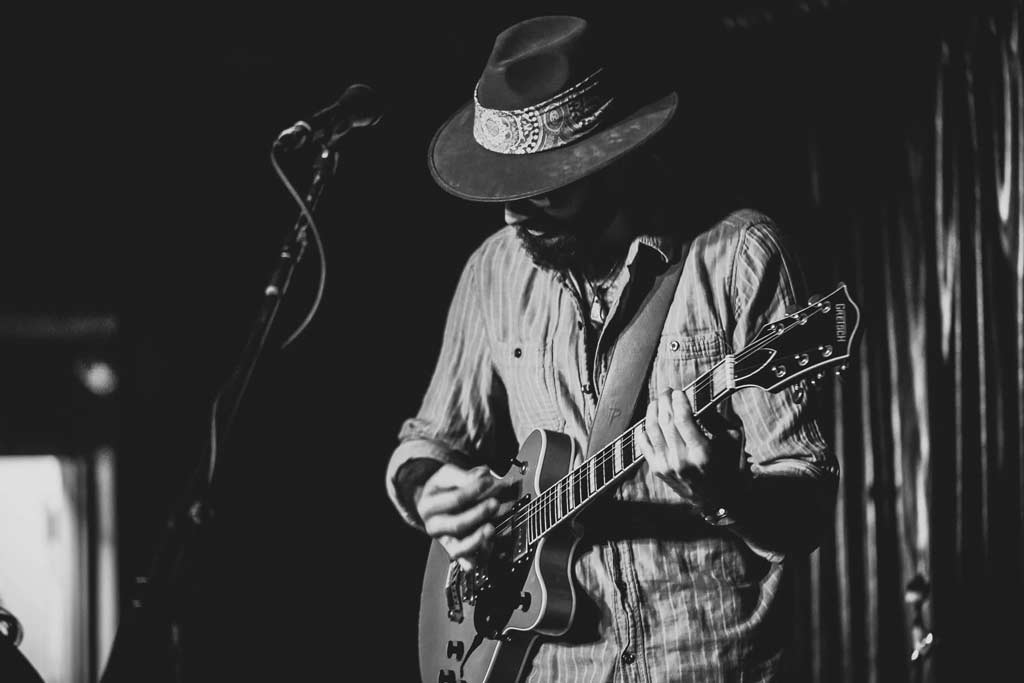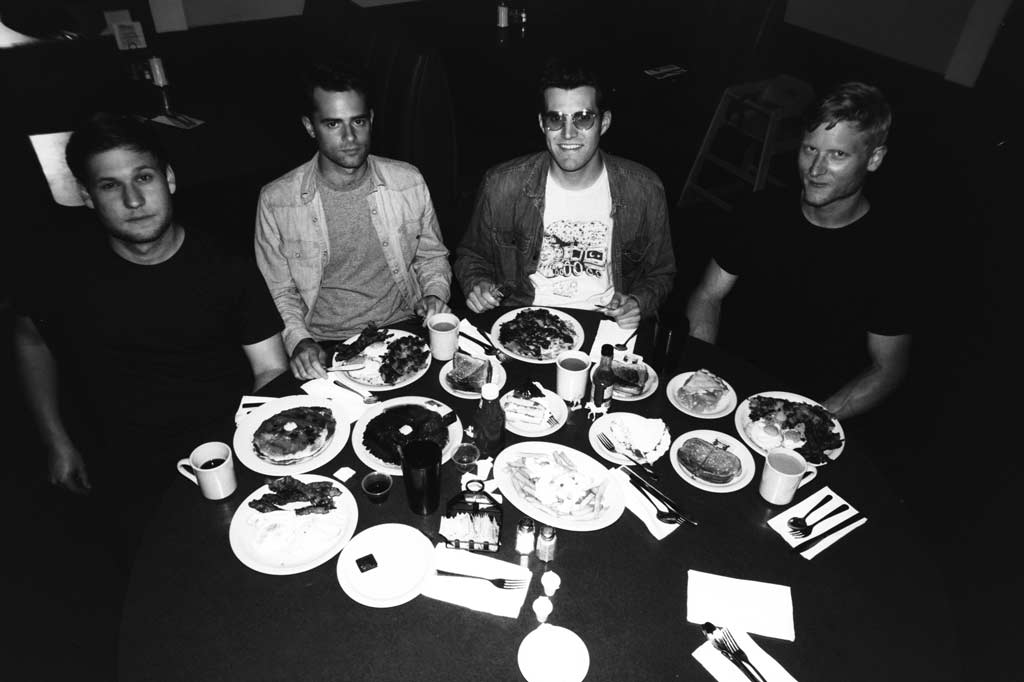Twenty five years ago today, the beat was born.
It was the sound of young adults from Louisville – a sprawling collection of collaborators, most of them close friends since childhood – surging with ideas, and busting out with a declaration that they intended to live an unfiltered, untethered life of art and music. It also was an incredible encapsulation of a moment in time: a Bizarro-world hybrid of rap and rock, heavy on samples, levity and inside references, that pre-dated nu-metal and all of its posturing and faux-seriousness. In the years that followed, its example was overshadowed, obscured even, by the bands the project and this self-released CD begat – Rodan, Crain, Rachel’s, June of 44, Shipping News – but it remains a founding document, a kind of Rosetta Stone for those interested in finding it.
Twenty five years ago today, on Oct. 10, 1992, King G and The J Krew released Indestructible Songs of the Humpback Whale. And, all these years later, its “beat poetry with a beat” still resonates as loudly as ever.
+ + +
“SOUL POWER — the J Krew scheme / Plus faxed sample snack by Deadly D / Epicenter Mindquake = Kentucky / Over grass true blue not ever green / Non-amateur front beat-voice factory.”
Post-rock’s history is inscribed with at least one great rap album. And the 19-track Humpback – which now is available in slightly edited/bootlegged form on Bandcamp, for those looking to track down a digital copy – is nothing if not adventurous.
After a cut-and-paste hip-hop tribute to WKRW – “A.M. radio intro when the only solution is soul” – the group gets down to business with aggressive guitars, pounding live drums, and an even more in-your-face, trade-the-mic delivery (“Sit The Calm”). From there, it’s a funhouse trip of Public Enemy-style rap (“Land of 2000 Beats, Part Two,” “Blackout”), synth-infused R&B (“Bass: The Final Frontier”), beatboxing (“Downhearted Blues”) and enveloping sound experiments (“Big Angry Jazz,” “Biscuits ‘N’ Gravy”). The group even throws in a medley of Slint’s “Kent” with Midnight Star’s “Freakazoid” for good measure – complete with weeping strings.
On songs by which Noble, Mueller and King are most known – Shipping News’ “A True Lover’s Knot” and Rodan’s “Everyday World of Bodies,” say, or “Lloyd’s Register” by Rachel’s, complete with King’s film projections – elements are tightly interwoven, as inextricably linked and functional as the threads of a rope. Humpback, despite its sonic brazenness, has the same quality of completion, of interconnection – of ideas melding into mission, of a circle being completed.
+ + +
“Searchin’ high and low / Ever loser with a pick and an ax / Scopes out another frontier to jab his two-edged flag / A sword for a straight edge – they divvy the earth / Into orderly shapres for their money’s worth / Don’t mean to bust farmin’ food for guy / But strip minin’ for jewels.”
King G and The J Krew didn’t really form the way most bands do, with a practice session in a garage or an impromptu performance in some dusty VFW lodge. They started, though not at any precise moment or place, at duPont Manual – a public, magnet high school in Old Louisville, adjacent to the University of Louisville campus, seeking students with potential for high academic achievement.
Greg King, band name: King G (of course), and Jonathan Hawpe (Secret Weapon) knew each other since elementary school. But, on Aug. 26, 1985, the first day of his freshman year, King met Jason Noble (a.k.a. M.C. Diogenes) and a history and bond of friendship that extended nearly 30 years, into the tenure of bands like Rachel’s and The Young Scamels, was born. (They remained extremely close until Noble’s tragic death on Aug. 4, 2012.) Later in the 1985-86 school year, King met Jeff Mueller (a.k.a. Crawdad) – they were on the same bus home together – and, as a group, the ideas started percolating under the surface of things.
“Once we’d all met, the momentum quickly built in terms of deciding ‘WE ARE ARTISTS,’ in no small part due to some awesome teachers we had in the visual arts program there [at duPont],” King told me recently. “We all really dug in and worked our asses off on every art form we could get our hands on, really tried a lot of things out, experimented, and honed our technical skills.”
All three loved 1980s hip-hop so it was only natural that expressions in music soon followed, most notably in acoustically interesting stairwells.
“We’d find ourselves in the stairwells at school. Greg would beatbox, and Jason and I would harmonize. That sort of evolved into us writing rap music and making fanzines a lot, too,” Mueller said. “The band itself wasn’t necessarily a joke but we never took it too seriously. It was about collaging and mingling together as many weird things as possible.”
The collage aspect of their references became evident in fanzines like Daddy! London! and Nuclear Waist, publications – before the eras of the Internet or even desktop publishing – filled with pure drippings of late-80s culture, artwork, plenty of inside references, and sometimes-serious musings on the state of Reagan-era American politics.
By the time they completed their run of fanzines, they were getting attention. Even legendary, Louisville indie record store Ear X-Tacy was advertising within their pages. But the operation was decidedly lo-fi.
“I had a bedroom on the top floor of my house, with my parents’ bedroom below, so it was very much a little sanctuary for us to mess around on projects, undisturbed, for hours on end – and late into the night, as often happened,” King said.
The synthesis into King G and The J Krew as a musical outfit, however, is murky.
Was it the famed Run DMC show in the summer of 1988 that spawned their interest in starting a project? Was it King and Noble knocking back and forth beats to the Miami Vice theme song? Turns out Mueller, who later went onto a run as post-rock guitarist of note, kicked off the rhymes.
“Jeff wanted to rap the Jewish song ‘Hava Nagila,’ so I recall making a beat, writing a keyboard line to accompany it, and him rapping it. I think that was our first attempt at a song, as a team, I guess,” King said.
King had been composing music before that – he was classically trained on the piano and expanded his musical color-palette on the keyboard while listening to music like Tangerine Dream. Noble also toyed with the piano, though he and Mueller later found success on six strings.
The earliest King G recordings featured friend Alan Lett on guitar and a lot of experimentation with sound pedals, which the group used for sampling. The Krew’s first real achievement was SNUG, a 50-minute “EP” recorded to Hawpe’s four-track TASCAM and self-released on 200 cassettes in the summer of 1990, between the band members’ freshman and sophomore years in college. The recordings were both a riot to hear and rough around the edges – but a point of departure.
“It was really, really fun – but total chaos,” Mueller recalled.
+ + +
“Defying the notion of anti-jazz / When there is no sacrifice / No give and take, no solos — all silence / It’s all pounded out on bricks and metal / Mufflers.”
Given the fact that King G and The J Krew was “together” for the better part of a half-decade, they didn’t perform live much. They made their public “debut” in the spring of 1989, during the band members’ senior year talent show at duPont. It was, to say the least, strange but wonderful.
“We were nervous as hell. Jason dressed like a member of The Cure, sort of, and Jeff was at the height of his personal style. I wore a costume crown,” King said. “We had put together a song called ‘DIS,’ which combined the ‘Hava Nagila’ experiment from before, but as part of a super long opus, which included a stripped down a capella passage. It was one of the best experiences of my life, even though we caused feedback at one point.”
From there, into the halls of legend.
The group played its Senior Art Show; at a huge party at Hawpe’s house, which featured Drew Daniel, later of the acclaimed electronic duo Matmos, on “dark texture of some kind;” at Danielle Dostal’s birthday party; on KCAI (mostly “Biscuits ‘N’ Gravy”); and at Zodiac in Downtown Louisville on New Year’s Eve in 1991 or 1992.
And then the humpback went the way of the dinosaur.
“When you’re in your late teens, early 20s, when you feel like all you’re responsible for is yourself,” Mueller mused, “it doesn’t matter how many dishes you break. It matters how hard you break them. That’s where we were.”
+ + +
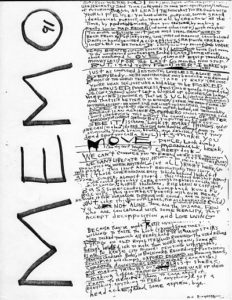 “If love, as the immortal P. Benatar says, ‘is a battlefield’ then Middle School is absolute Doomsday.”
“If love, as the immortal P. Benatar says, ‘is a battlefield’ then Middle School is absolute Doomsday.”
Noble and Mueller had dropped out of art school by the spring of 1991 and were living in a house on Taylorsville Road in Louisville when they started work on Indestructible Songs of the Humpback Whale. With King, who soon left for another school-year at Kansas City Art Institute, they wrote and recorded “Bass: The Final Frontier;” after King left, they simply went from there.
“We kind of holed up in a couple of different houses and went insane – we just worked on rap music for a year,” Mueller said.
Enter Aaron Frisbee.
Frisbee, a friend of the group and intern at Alan Hart Productions, heard about the Taylorsville Road sessions and loaned Mueller and Noble an eighth-track cassette recorder – hardly state-of-the-art, even for 1991 – to up the ante on production.
He also arranged a bizarre meeting with a studio exec interested in signing King G and the J Krew to a professional contract. (No joke.)
“It was an interesting time, a fork in the road, where fate showed Jason and the group the Old Guard,” Frisbee told me. “Jason and his peers were more DIY, like Slamdek and Touch-and-Go. That really crystallized their desire to do it the way they wanted to.”
Tim Furnish, band name: Jor-El and later of Parlour, played “chunky metal guitar” for the band during its Taylorsville Road period.
“They were very animated and energetic. Always up to something silly. Became quick friends. Jason ended up staying at my parents for a while because he had a family issue and a crush on my mom. He’d later marry my sister,” Tim laughed.
“Jeff and Jason had an inseparable chemistry,” Tim added. “They riff off each other like no one else I’ve ever known.”
The chemistry of the moment was evident everywhere, it seemed.
From King’s journal at the time:
“The basement with bare bulbs and long twine drawstrings grew hot and languid, the cement walls turning inside out with the air, building on our backs some nights; so we would stop and go upstairs, where heat rose and some ferns grew on chaffing window sills. As a summer goes, our music met the august, burning in a Kentucky humidity, and we couldn’t complete it fully. I left the [drum] machine in my brother’s hands.
“Rewind to upstream. Early June, the Krew and I met in the wooded park of the Cherokee name, to discuss and intuit some lyrical ingenuity for the up and coming musical consummation. We hang on the stone block near the creek, leading to the Big Rock, and changed locale to a red chafing park bench, then to a fresh orange jungle gym, the trees very full in a summer wind, branches in every level from ground to the tops. At each spot we jumped around rhymes and meter times, but eventually left the park ‘cause nature was just too cool to look at just then.”
After King left, Noble, Mueller, and Furnish – Furnish was, by then, playing in Crain – moved into The Rocket House, an aging brownstone in need of some love and tenderness in Old Louisville. (The life of the house and its residents were chronicled in the famed underground film Half-Cocked. While some of the tone of that picture was spot-on, the film made the musicians’ efforts to make art seem more haphazard than they ever were.)
By this time, friends recalled, Noble and Mueller had “clicked,” a trait they displayed in Rodan, and, later, well into the 2000s with Shipping News.
At The Rocket House, they completed the record, amid countless indie bands practicing and passing through the space. Within months, Noble and Mueller would join Kevin Coultas and Tara Jane O’Neil in King Kid International; that blossomed into Rodan. Before it was released, Humpback already was becoming a footnote in larger histories.
“In a very real sense, the record was a blossoming of Jason and Jeff’s rock songwriting sensibilities, through the lens of a hip hop project we’d started as teenagers,” King told me. “My involvement was more ‘overt’ with SNUG, and bringing energy and gear to the table overall, and of brainstorming and encouraging weird ideas alongside theirs. And being co-author of the decision to live a life of art, at all costs.”
+ + +
“Kentucky, Baltimore, Cincinnati, K.C. / Everywhere full-force teenage on the street / Violence and dreams boomin’ system locust beat / From cassette-carrying King Krew EP / The locusts rises, we got animal sound on our side / Humpback the bass-shark, the snare-dolpin ride / Spreadin’ blue fire in the fleur-de-lis city / River fountain in the rear-view, we pull a U-ey.”
Indestructible Songs of the Humpback Whale was, like a Babylon Dance Band show or the 1984 Squirrel Bait demos, a document of the Louisville music scene – a snapshot in the community’s time and place that crystallizes something grander and more abstract than just the music contained therein.
“Towards the middle of the writing and recording of the CD, the Indestructible Songs CD, a huge community of people were helping us,” Mueller said. “There was Tim, Simon [Furnish]. Kevin Coultas from Rodan played on a song. It was very much like a Louisville Thing. It became a very serious project. We spent a lot of money and time making sure it was realized.”
“Jason told me he enjoyed listening to that record as much as anything he had worked on – it was very pure,” Frisbee remembered. “Not to be blasphemous, but I almost feel Jason was a messianic figure, the type who could hit chords and resonate with people. Really, he was talented musically but his real superpower was getting people involved in a cause.”
The core members of The Krew didn’t stray far from each other, despite the fact that, in the end, they didn’t all stay in Louisville.
Noble went on to King Kid International and Rodan after King G and The J Krew, then to post-classical ensemble Rachel’s, his excellent solo project Per Mission, and Shipping News. Mueller joined Noble in King Kid International, Rodan and Shipping News, and gained lots of recognition for his role as guitarist in June of 44. Today, he runs Dexterity Press. King went on to provide film projections for live Rachel’s shows, and develop a career in film editing and cinematography.
Were Noble still alive, both King and Mueller agreed there’d be some kind of celebration, some kind of new project or reunion, to mark the record’s silver anniversary, maybe complete with thick shakes.
Noble’s death remains raw in these hearts, despite efforts to focus in a positive way on his “Love Always Wins” attitude and extensive musical canon.
“What this does is it makes me miss Jason significantly,” Mueller told me. “It’s more about being proud of something I was a part of, but also marking Jason’s musical legacy.”
The anniversary also reminded Frisbee of a punk show in Louisville by some anonymous, touring Chicago-based band, where the band members heard tracks from the then-soon-to-be-released Indestructible Songs of the Humpback Whale.
In short, it knocked them over. As it does many of us.
“They said, ‘Man that’s music that cool people are going to be listening to,’” Frisbee said. “Now, 25 years later, cool people hopefully get a chance to hear it.” – Popdose, Oct. 10, 2017
-30-
